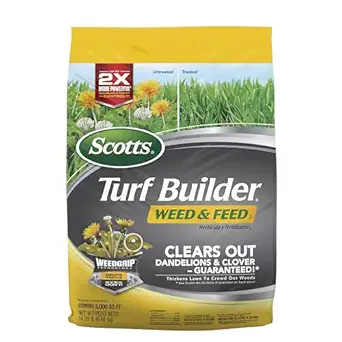Spring is a crucial time to prepare and rejuvenate your Bermuda grass lawn after winter dormancy. Performing the right tasks in spring ensures your lawn grows lush, healthy, and vibrant throughout the growing season.
Here’s a detailed guide to all the tasks you should perform in spring for the perfect Bermuda grass lawn.
Spring (March – May) Bermuda Grass Care Guide
1. Clean Up and Debris Removal
Before starting any lawn care, clear the area of debris such as leaves, twigs, and dead grass.
- Why: Debris can block sunlight and hinder the grass from greening up.
- How: Use a rake or leaf blower to clean the lawn thoroughly.
2. Mow Low (Scalping)
Scalping is an important step for Bermuda grass to remove dormant grass and encourage new growth.
- Why: Promotes sunlight penetration to the soil and accelerates green-up.
- How:
- Set your mower to the lowest setting and remove old growth.
- Bag the clippings to prevent thatch buildup.
- Use a reel mower to get low mow heights.
- When: Perform scalping once soil temperatures reach 60°F.
3. Aerate the Soil
Aerating helps reduce soil compaction and improves air, water, and nutrient penetration.
- Why: Encourages deep root growth and healthy turf.
- How:
- Use a core aerator to remove small plugs of soil.
- Focus on high-traffic areas where compaction is more likely.
- When: Perform aeration after the lawn starts greening up and actively growing.
4. Apply Pre-Emergent Herbicide
Prevent weeds before they germinate with a pre-emergent herbicide.
- Why: Keeps the lawn weed-free during the growing season.
- How:
- Apply evenly across the lawn with a spreader.
- Water the lawn lightly to activate the herbicide.
- When: Early spring, as soil temperatures reach 55°F consistently.
5. Overseed Thin Areas (Optional)
If you notice bare or thin patches, overseeding can help restore uniformity.
- Why: Ensures a dense, even lawn.
- How:
- Dethatch or aerate the lawn before seeding.
- Spread high-quality Bermuda grass seed in sparse areas.
- Water regularly to promote germination.
6. Dethatch If Needed
Thatch is a layer of organic material that can block nutrients and water.
- Why: Prevents thatch buildup from choking the grass.
- How:
- Use a dethatching rake or machine to remove excess thatch.
- Rake up and dispose of the debris.
- When: Perform dethatching only if the thatch layer exceeds 0.5 inches.
7. Fertilize Properly
Fertilization is key to providing Bermuda grass with the nutrients it needs to thrive.
- Why: Encourages rapid growth, vibrant color, and overall health.
- How:
- Use a balanced fertilizer with nitrogen, phosphorus, and potassium (e.g., 16-4-8).
- Apply according to the product label and water in immediately.
- When: Begin fertilizing once the grass is 50% green, typically mid to late spring.

Scotts Turf Builder Weed & Feed, Weed Killer Plus Lawn Fertilizer, Controls Dandelion and Clover
8. Irrigate Correctly
Bermuda grass doesn’t need much water in early spring but requires consistent moisture once active growth begins.
- Why: Supports green-up and prevents drought stress.
- How:
- Water deeply and infrequently, applying about 1 inch per week (including rainfall).
- When: Adjust watering frequency based on local weather conditions.
9. Spot-Treat Weeds
For weeds that emerge despite the pre-emergent, use post-emergent herbicides.
- Why: Maintains a clean, uniform lawn.
- How: Spot-treat broadleaf or grassy weeds with a selective herbicide.
10. Edge and Trim
Spring is the perfect time to sharpen the edges of your lawn for a polished appearance.
- Why: Defines borders and prevents grass from encroaching on walkways or flower beds.
- How: Use a string trimmer or lawn edger for clean, sharp lines.
11. Test and Amend Soil
Testing your soil provides insights into pH and nutrient levels.
- Why: Ensures your lawn has the right conditions for optimal growth.
- How:
- Conduct a soil test through a local service or DIY kit.
- Apply lime to raise pH or sulfur to lower it, as needed.
12. Check Your Irrigation System
Ensure your sprinklers or irrigation system is working efficiently.
- Why: Prevents water waste and ensures even coverage.
- How:
- Run your system and check for clogs, leaks, or misaligned sprinklers.
- Adjust the spray pattern to avoid watering non-lawn areas.
13. Monitor for Pests and Diseases
Spring is a critical time to catch pest infestations or disease outbreaks early.
- Why: Early detection helps minimize damage and preserve lawn health.
- How:
- Look for signs of pests like grubs or armyworms.
- Treat issues with appropriate pesticides or organic solutions.
Summary of Spring Tasks
| Task | Timing | Frequency |
|---|---|---|
| Debris Removal | Early Spring | Once |
| Scalping | Early Spring | Once |
| Aeration | Mid to Late Spring | Once |
| Fertilization | Mid to Late Spring | Every 6–8 weeks |
| Pre-Emergent Herbicide | Early Spring | Once |
| Overseeding (Optional) | Late Spring | As Needed |
| Watering | Mid to Late Spring | Weekly |
| Weed Spot-Treatment | Late Spring | As Needed |
| Edging and Trimming | Late Spring | Monthly |
| Soil Testing and Amendments | Early Spring | At Least Once Annually |
By performing these spring tasks, your Bermuda grass lawn will start the growing season strong, setting the stage for a healthy, green, and beautiful lawn all year long.